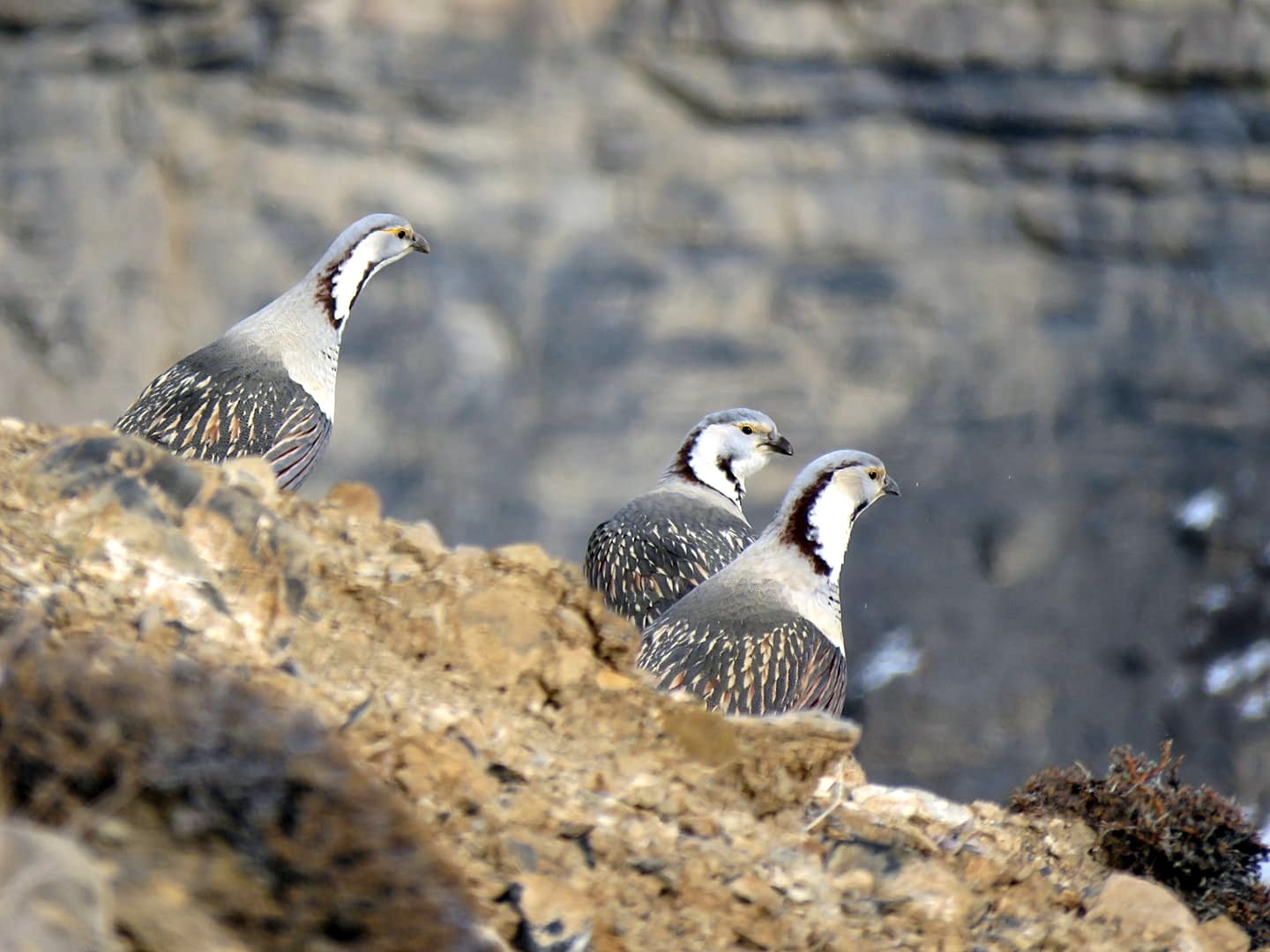
Snow Leopard Photo Tour in Spiti Valley (Kibber WLS)
It might strike you as both bizarre (and equally fascinating) to drive to Spiti valley and Kinnaur during wintertime. Though for solitude seekers and wildlife photographers — with a goal to unplug and get off-grid, or spot endangered (now vulnerable) snow leopards and assorted mammal and bird species in Kibber wildlife sanctuary — the snowscapes of the Spiti valley and Kinnaur Himalayas are a true refuge and a place for the mindful pause. Likewise, winter months are great to learn how the people of Spiti valley survive in freezing, sub-zero temperatures for months.
Snow Leopard Photo Expedition in Spiti (2023-24)
| Best Time | December to March |
|---|---|
| Difficulty | Moderate |
| Altitude | 4270m (Kibber village) |
| Key wildlife species | Snow Leopards, Himalayan Ibex, Himalayan Blue Sheep, Red fox, Himalayan Snow Cock, White breasted stone / beech marten (aka Himalayan Weasel), Eurasian Lynx, Tibetan Sandgrouse, and Woolly Hare |
| Trip span | 9 Days and 8 Nights |
| Scheduled Events in 2024 | January 1, 12 and February 5, 15 |
| Activity | Hiking, wildlife spotting and photography |
The winter trip to Spiti has its own charm and vulnerabilities. The charm lies in the tranquillity — so peaceful that you would hear yourself breathing — of the Spiti valley, less to no crowd, snowy winter landscape, frequent sightings of rare Himalayan wildlife like snow leopards, no electricity, and no internet.
Kibber Wildlife Sanctuary (WLS) is also a part of 16th Cold Desert biosphere reserve(declared a biosphere reserve in 2009).
Wildlife found in Himalayan cold deserts (notably in Kibber WLS) are:
- Snow leopard
- Himalayan ibex
- Blue sheep (bharal)
- Tibetan wolf
- Red fox
- Number of bird species (like Kestrel, Finches, Chough, Larks, Red starts)
The cold deserts (Lahaul and Spiti district and upper Kinnaur region) in Himachal Pradesh cover about 20% of its total (55673 square km) geographical area. The Himalayan cold deserts have distinct cultural and geographical features. They are characterized with regions of:
Spiti valley of Himachal Pradesh (which literally translates to an abode of snow) is located in trans Himalayan

These deep gorges near Chicham village are the sanctuary for Snow Leopards
The extreme environmental events like avalanches, snowstorms, landslides, and rockfalls are common is this part of Himachal Pradesh state. Rare Himalayan wildlife like Snow leopard has adapted their body to survive under such extreme climatic conditions.
How To Sight Snow Leopards In Kibber WLS?
Patience is key in a snow leopard expeditionas with any wildlife expedition. You need to be at the right spotting places at the right time. It is not an easy task to pursue these enigmatic cats who live and are prey on Himalayan blue sheep at an altitude well over 3, 500 meters from the sea level, at temperatures close to -30 degrees.

Wildlife map of Lahaul & Spiti district of Himachal
The right times are early morning and late evenings. And the right places are Kibber wildlife sanctuary and Kibber-Chicham village plateaux, slopes between Kee, Gete and Tashigang, Shilla Nalla area, plateau around Langza, Hikkim, Komic and slopes around Demul, Salung, Rama and Lalung.
Sighting and photography tips
Here are some tips to increase your chances of sighting the snow leopards.
- Hire local spotter/guides: They have the best knowledge of the terrain, the weather, best time and the spotting locations in their area. They can also help you with sanctuary/national park permits, logistics, and safety.
- Plan your trip after a snowfall: Snow leopards are easier to spot against a snowy background, as their grey fur stands out more. Snow also makes their tracks more visible, which can help you track them down.
- Be patient and persistent: Snow leopards are hailed as the master of camouflaging. They are rare and shy animals that can go unnoticed for days or weeks. You need to be prepared to spend long hours in the cold, waiting and watching for any sign of movement.
- Follow their prey: Snow leopards feed on mountain ungulates, such as ibexes and blue sheep. If you find these animals, you have a higher chance of finding a snow leopard nearby. Look for rocky outcrops, cliffs, and ledges where snow leopards like to ambush their prey.
- Study their behavior: Snow leopards have unique and fascinating habits that can help you understand and anticipate their actions. You can learn more about them from online resources, such as the Snow Leopard Trust and National Geographic, books, such as The Snow Leopard by Peter Matthiessen and Snow Leopard: Stories from the Roof of the World by Don Hunter, or talk to experts who have photographed snow leopards in the wild.
Drive To Kinnaur & Spiti valley in Winter
Snow drives to Kinnaur and the Spiti valleyin winter is a complete digital detox and an expedition itself.

Infographic of Snow Leopard Habitat
The fragility & hardships of the winters in Spiti valley is punctuated by the limited road connectivity, driving on icy roads, no running tap water, limited warm water, subzero temperatures, and no room heating.

Population estimate of Snow Leopards in Kibber WLS of Himachal Pradesh

The most frequent sighting has been in Kibber Plateau, slopes between Kee, Gete and Tashigang, Shilla Nalla area, plateau around Langza, Chicham, Hikkim, Komic and slopes around Demul, Salung, Rama and Lalung.
snow leopard population mappingwas done using 80 camera traps in upper Kinnaur (Asrang-Lippa wildlife sanctuary), Pin Valley, Baspa valley , Tabo, Tharot-Miyar, Bhaga, Chandra, and upper Spiti valley of Himachal Pradesh
Event Registration
Fields marked with an *are required
.png)






























